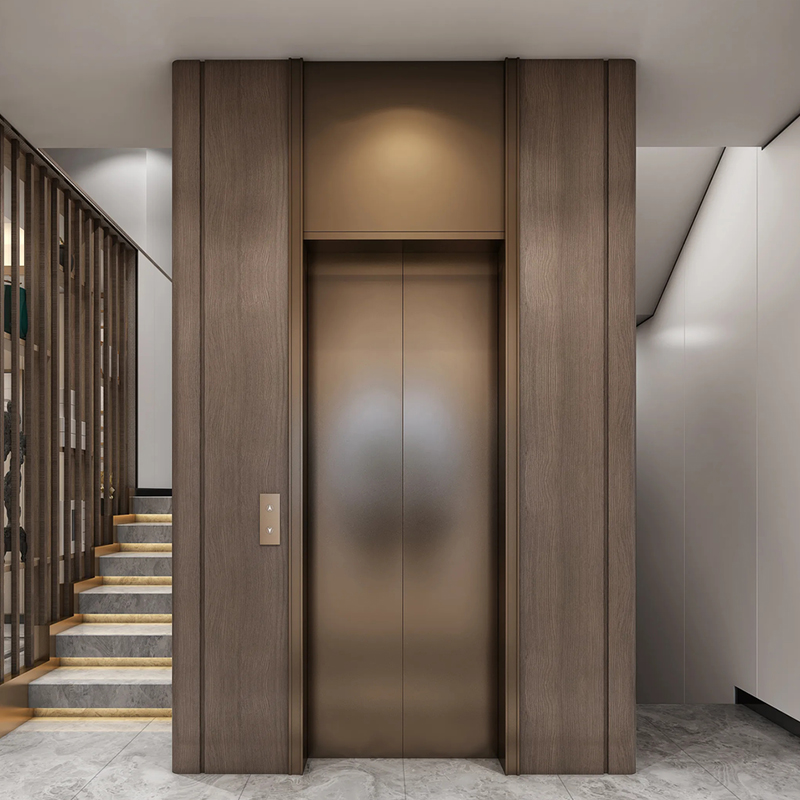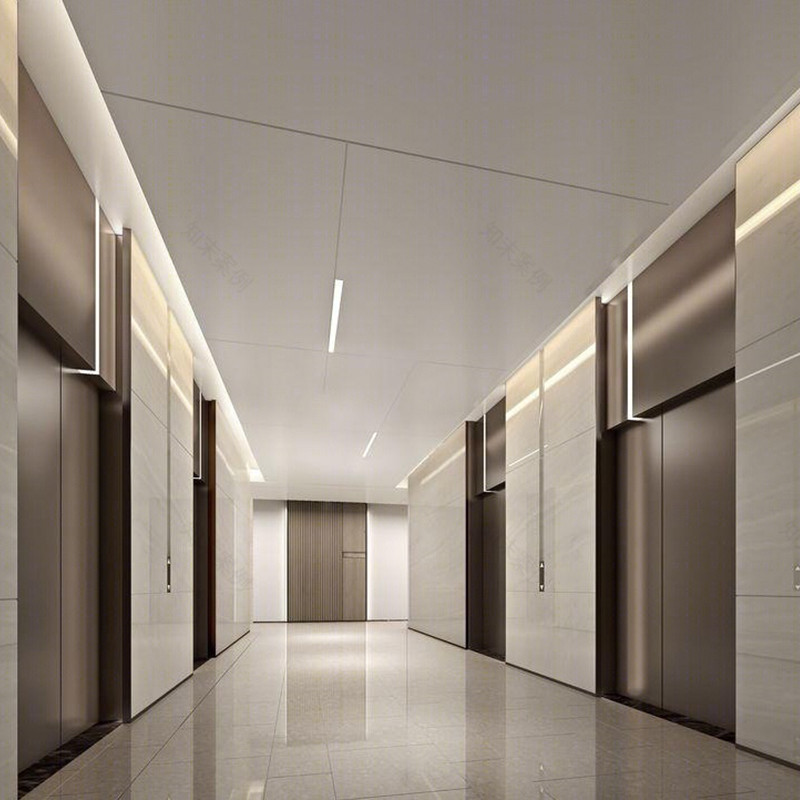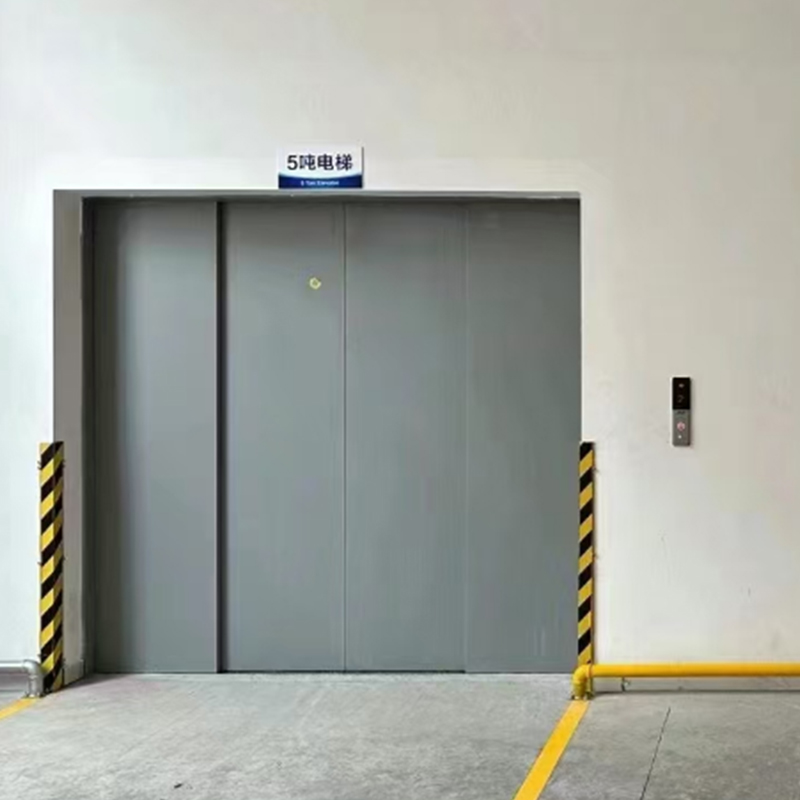
Commercial cargo elevators: efficient logistics solutions for modern commercial operations
Posted by Admin | 17 Jul
In the contemporary commercial environment, efficient vertical cargo transportation systems have become an indispensable infrastructure for all kinds of commercial places. As cargo transportation equipment designed specifically for commercial operations, commercial cargo elevators are increasingly becoming a core component of the logistics system of commercial places such as shopping malls, hotels, and hospitals with their strong carrying capacity, reliable operating performance, and flexible space configuration. This type of elevator not only meets the high-frequency and high-intensity cargo transportation needs of commercial places, but also provides safe and efficient vertical logistics solutions for modern commercial operations.
Professional combination of commercial attributes and freight functions
The primary feature of commercial cargo elevators is reflected in their professional commercial use positioning. Unlike ordinary passenger elevators, this type of equipment is specially designed for the operating characteristics of commercial places and can withstand long-term, high-frequency continuous operation. In terms of design standards, commercial cargo elevators strictly follow the special specifications of commercial buildings, including higher safety factors, stronger durability, and more complete emergency systems. The particularity of commercial operations requires that this type of elevator must have the ability to handle special periods such as peak passenger flow and concentrated logistics, while also taking into account the convenience of daily maintenance.
Freight function is the core value of commercial freight elevators. In order to meet the diverse freight transportation needs of commercial places, this type of elevator adopts a reinforced load-bearing system, including a specially reinforced car structure, a high-strength guide rail system and a specially optimized drive device. Considering the actual use scenarios of commercial places, commercial freight elevators not only focus on freight transportation, but also take into account the needs of accompanying personnel transportation, and are specially designed in terms of safety protection and operational convenience. The internal space layout of the car has been carefully planned to ensure that all types of commercial goods can be transported safely and efficiently.
Excellent performance meets commercial logistics needs
Commercial freight elevators show obvious professional advantages in technical specifications and performance parameters. Load capacity is the most prominent feature of this type of equipment. Its load range usually starts from 1,000 kg and can reach more than 10,000 kg, which can fully meet the transportation needs of commercial places from daily goods to large equipment. The size of the car can be flexibly customized according to specific commercial purposes. Whether it is the turnover of goods in supermarkets, the transportation of linens in hotels, or the handling of medical equipment in hospitals, the most suitable space configuration solution can be found.
Door system design is an important feature of commercial freight elevators. To adapt to different business scenarios, this type of elevator provides a variety of door system options, including traditional double doors, space-saving rolling shutter doors, and ramp doors for easy loading and unloading. The heavy-duty rail system ensures the stable operation of the elevator under frequent use, while the high-power drive device provides sufficient power guarantee for heavy-load transportation. Considering the requirements for aesthetics in commercial places, commercial freight elevators also focus on the coordination and unity with the commercial environment in appearance design, ensuring functionality while taking into account aesthetics.
Wide coverage of commercial application scenarios
In the retail business field, commercial freight elevators play a key role as a logistics hub. Large shopping malls rely on this type of equipment to achieve goods distribution and inventory turnover between floors, ensuring timely replenishment of retail stores. Supermarket warehousing and logistics systems are even more inseparable from the support of commercial freight elevators. The entire process of commodity transportation from underground warehouses to sales floors depends on its efficient operation. The catering industry uses this type of elevator for vertical transportation of ingredients, tableware and other materials to ensure seamless connection between the back kitchen and the front field.
The operation of the service industry is also inseparable from the support of commercial freight elevators. High-end hotels use this type of equipment to quickly deliver logistics materials such as linens and meals, maintaining a high-quality service level. Medical institutions rely on special cargo elevators to transport medical equipment, medicines and bedding to ensure the smooth progress of medical processes. Educational institutions use this type of equipment to complete the inter-floor transportation of heavy objects such as teaching equipment and experimental equipment, providing logistical support for teaching activities.
Commercial cargo elevators have also developed a variety of professional models to meet special business needs. Cold chain logistics elevators are equipped with insulation systems and moisture-proof designs to meet the transportation requirements of fresh food; dangerous goods transportation elevators use explosion-proof materials and special ventilation systems to ensure the safe transportation of dangerous materials such as chemical products; and the extra-long item transportation solution uses special car designs to solve the vertical transportation problems of oversized items such as building materials and decorative materials. These professional solutions fully demonstrate the ability of commercial cargo elevators to cope with diverse business needs.
Strict regulations and safety management system
The safety standard system for commercial cargo elevators is extremely strict. In terms of commercial building specifications, such equipment must meet special fire safety requirements, including fire partition settings, emergency power supply configuration, etc.; emergency rescue standards require elevators to have complete trapped people self-rescue functions; barrier-free design specifications ensure the safe evacuation of personnel under special circumstances. These specifications and requirements together constitute the basic guarantee for the safe operation of commercial freight elevators.
The safety protection system is the top priority in the design of commercial freight elevators. The overload alarm device can monitor the car load in real time to prevent safety hazards caused by overload operation; the door safety protection system uses photoelectric sensing and mechanical anti-clamping devices to avoid accidental injuries during the door opening and closing process; the emergency descending device ensures that the car can be safely lowered to the nearest floor in emergency situations such as power outages. These safety systems work together to build a comprehensive safety protection network.
Scientific selection and professional maintenance
The selection of commercial freight elevators requires comprehensive consideration of many factors. The matching of building structure is the most basic consideration, including the adaptation of physical conditions such as shaft size, floor height, and pit depth; the adaptability of cargo type requires the selection of corresponding car materials and structural designs according to the characteristics of the transported goods; the energy efficiency rating assessment puts forward requirements for the energy-saving performance of the elevator from the perspective of long-term operating costs. Scientific and reasonable selection is a prerequisite for ensuring that commercial freight elevators can perform at their best.
Operation and maintenance management is crucial to the long-term stable operation of commercial freight elevators. Establishing a standardized regular inspection system can timely discover and eliminate potential faults; equipping a professional maintenance team to ensure that the elevator is always in the best working condition; and a complete spare parts supply system provides guarantee for rapid maintenance. In the environment of high-intensity use in commercial places, professional operation and maintenance management can not only extend the service life of equipment, but also ensure the continuity of commercial operations.
Development trend of intelligence and greening
Technological innovation is driving commercial freight elevators to develop in a smarter direction. The intelligent logistics integration system seamlessly connects elevators with the warehouse management system of commercial places to realize the automated dispatching of cargo transportation; energy-saving drive technology significantly reduces the energy consumption of elevator operation through permanent magnet synchronous motors and energy feedback systems; the application of remote monitoring platform makes the equipment status visible in real time, and fault warnings and maintenance reminders are more timely and accurate. These technological innovations are reshaping the functional boundaries of commercial cargo elevators.
Changes in market demand also point the way for the development of commercial cargo elevators. The rise of new retail formats has put forward higher requirements for the flexibility and intelligence of cargo transportation; the development of automated warehousing has promoted the deep integration of cargo elevators and robot sorting systems; the concept of green commercial buildings has prompted elevator manufacturers to develop more environmentally friendly solutions. It can be foreseen that in the future, commercial cargo elevators will continue to innovate in the direction of intelligence and greening, providing more efficient and environmentally friendly vertical logistics solutions for commercial operations.
-
 Founding Road, Qidu Linhu Economic Zone, Wujiang City, Jiangsu Province, China
Founding Road, Qidu Linhu Economic Zone, Wujiang City, Jiangsu Province, China
-
 [email protected]
[email protected]
-
 +86 17701557926/+86 0512-63818375
+86 17701557926/+86 0512-63818375


 En
En English
English русский
русский Español
Español عربى
عربى





